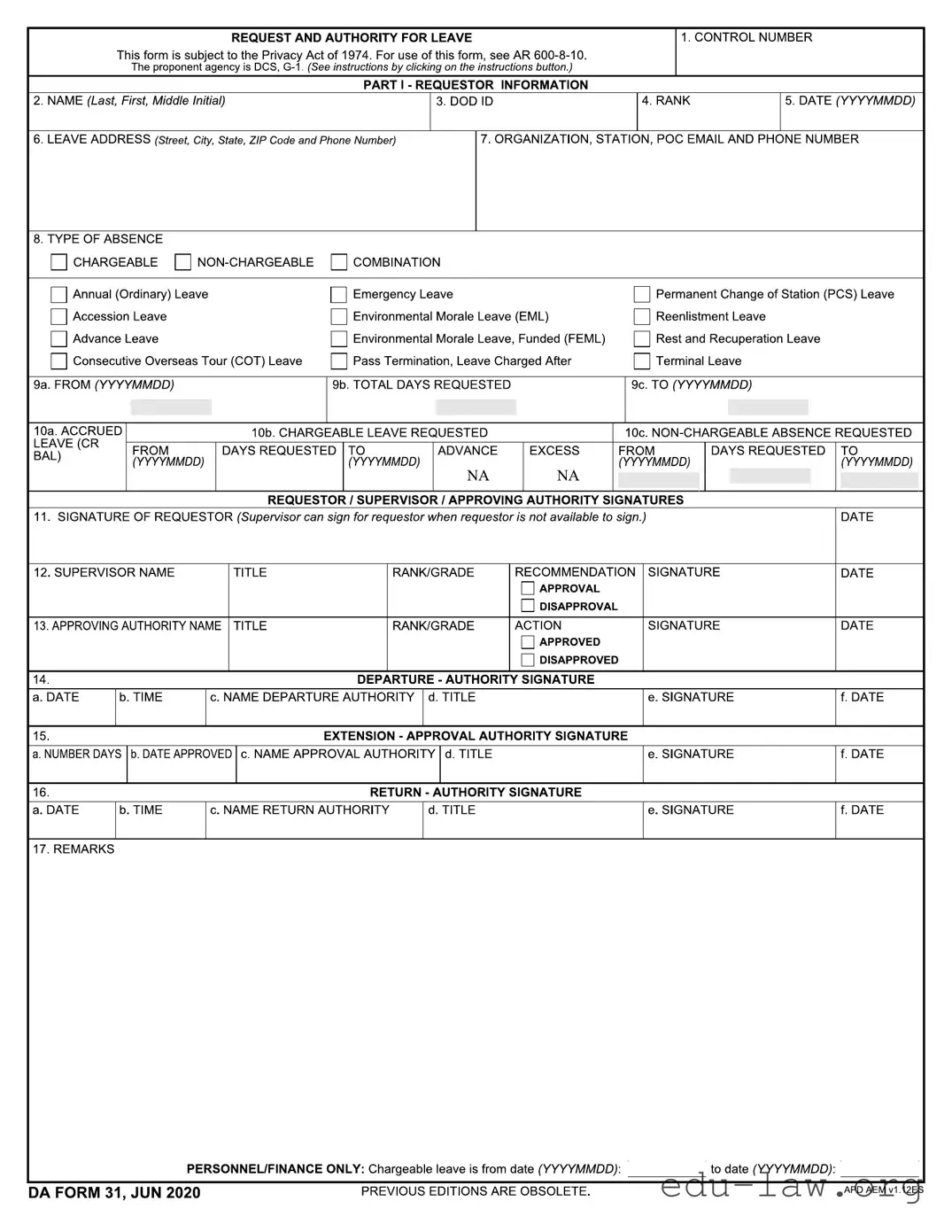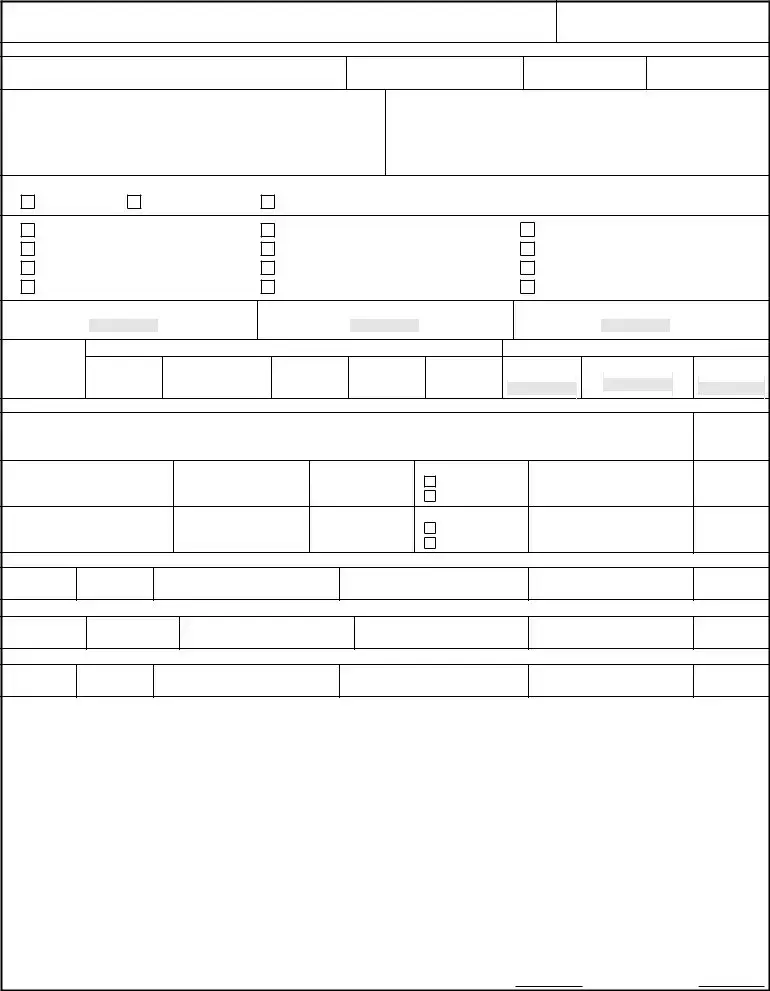The DA Form 671 is another document that serves a similar purpose to the DA 31. This form is used for requesting a change in a service member's duty status. Like the DA 31, it requires detailed personal information and specifics about the leave request. Both forms highlight the importance of supervisor approval and keep a detailed record of the request process. The DA Form 671 is primarily intended for military personnel needing to update their leave status or make changes to previously approved leave.
The Leave and Earnings Statement (LES) is also relevant here. While the LES doesn’t initiate a leave request, it provides critical information regarding one’s leave balance. Service members often refer to their LES to understand how much chargeable and non-chargeable leave they have available before filling out the DA 31 form. Understanding this balance can help in making informed decisions when planning time off, reflecting the interconnectedness of these documents.
The Standard Form 50 (SF-50) is another document that can be compared to the DA 31. The SF-50 is primarily used for federal civilian employees to report changes in employment status, including leave. Although it’s typically utilized in a civilian context, both forms necessitate a detailed account of the requesting individual, ensuring that records remain accurate and transparent. Proper documentation is crucial in both cases to maintain organizational integrity.
The DD Form 214 also shares similarities with the DA 31 in that it is critical for military personnel. This form is issued upon discharge and summarizes military service, including leave entitlements. While not a leave request form like the DA 31, its role in documenting service and leave enables service members to understand their past entitlements when preparing for future requests or employment opportunities outside of the military.
The DA Form 4626 is applicable in cases where an individual uses leave for participation in certain military duties. This request form is similar to the DA 31 because both require the approval of higher authorities and the recording of the leave type. Both documents play a role in ensuring that the service members’ time is managed effectively, contributing to organizational efficiency.
The Form 338 (Application for Transfer of Duty Status) is a request that is often accompanied by a reason for the leave. Much like the DA 31, it requires clarity in intent and purpose, and it counters any ambiguity that could arise in regards to a service member's whereabouts. Both forms reinforce the system of accountability among military personnel.
For those in a different branch of the military, the Navy uses the Request for Leave (NAVPERS 1336/3) form. While it has a different format, the underlying principles are the same. The NAVPERS form requires personal information, type of leave requested, and details regarding dates. Both forms ultimately allow military personnel to request time off while assuring all necessary approvals from superiors.
In the civilian sector, the Family Medical Leave Act (FMLA) request form also bears resemblance to the DA 31. While FMLA is primarily for family and medical leave, the structure and requirement for a request and patient information share a common purpose. Both documents ensure that the employee's needs are documented and accounted for professionally, resulting in organized record-keeping.
The Vacation Request Form used by many companies parallels the DA 31 in another setting. Like the DA 31, this form often captures dates of absence, reason for leave, and requires management approval. Both processes are essential for maintaining effective communication between the employee and employer while ensuring that operational needs are met during the absence.
Ultimately, the Air Force uses the AF Form 988 for leave requests, which closely mirrors the purpose of the DA 31. This form outlines what military personnel need to submit in terms of the leave request process and includes a section for supervisor recommendations. The goal of both forms is to facilitate a transparent and organized approach to time away from duty.

